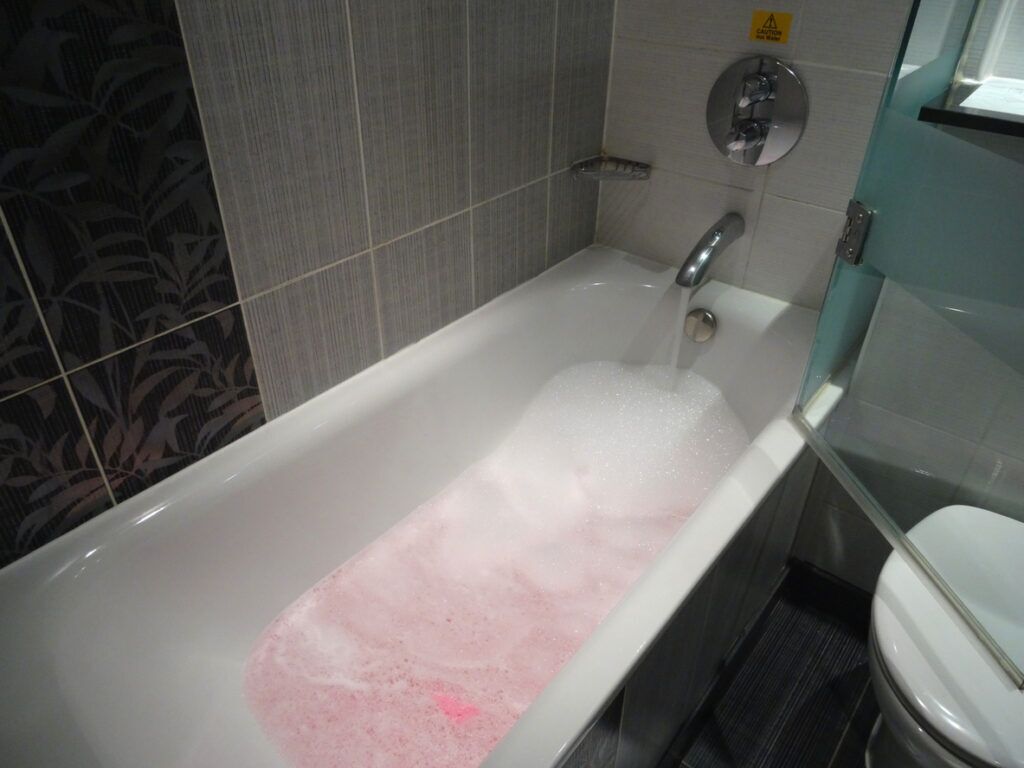Reasons for Waste Rising Through the Bathtub
Reasons for Waste Rising Through the Bathtub
Blog Article
What are your ideas with regards to Why is There Sewage Coming Up Through the Bathtub?

Sewage back-up in the tub can be a distressing and unhygienic trouble for any type of house owner. Not just is it troublesome, but it additionally presents major wellness dangers and indicates underlying issues with the plumbing system. Recognizing why sewage is turning up with the bath tub is crucial for taking proper activity to address the problem successfully.
Intro to the Problem
Typical Factors for Sewage Backup
Obstructions in the Sewage System Line
One of the most common sources of sewage back-up is an obstruction in the sewer line. This can take place due to the accumulation of particles, oil, or foreign things in the pipes, protecting against correct circulation and creating sewer to support right into your bath tub.
Tree Origin Invasion
Tree roots looking for moisture and nutrients can infiltrate sewage system lines via little fractures or joints. In time, these origins can expand and expand, triggering significant damage to the pipes and resulting in sewer backup problems.
Recognizing the Issue
When sewage draws back up right into the tub, it's a clear sign of an issue with the water drainage system. The wastewater that needs to be moving away from your home is instead finding its way back into your space, which can lead to significant damage and health hazards.
Prospective Causes
Numerous elements can add to sewer backup in the bath tub. From clogs in the drain line to issues with the plumbing facilities, identifying the source is necessary for locating a service.
Aging Infrastructure
Older homes may have obsoleted plumbing systems that are extra susceptible to corrosion, cracks, and wear and tear. As pipelines age, they become much more prone to leaks and obstructions, increasing the possibility of sewage back-up cases.
Heavy Rainfall or Flooding
Throughout periods of heavy rainfall or flooding, the sewer system may become overloaded with excess water, causing back-ups and overflows. This can lead to sewage supporting into bathtubs and various other components inside the home.
Indicators of Sewage Back-up
Foul Odors
Unpleasant odors rising from drains or fixtures, particularly in the bathroom, may suggest sewer back-up issues. These smells are commonly strong and relentless, indicating a problem that needs prompt attention.
Slow Draining Fixtures
Tubs, sinks, and bathrooms that drain slowly or not in any way could be experiencing sewer backup. If multiple components are influenced at the same time, it's likely that the problem originates from a typical point, such as the major sewer line.
Gurgling Sounds
Unusual gurgling or gurgling noises originating from drains when water is running somewhere else in the house are a measure of air entraped in the plumbing system. This air accumulation can arise from sewer backup and must be checked out quickly.
Health And Wellness Risks Associated with Sewage Back-up
Contamination of Supply Of Water
Sewage back-up can infect the supply of water in your house, positioning a severe health threat to you and your household. Exposure to contaminated water can result in intestinal issues, skin infections, and various other health problems.
Mold Development
Wetness from sewage backup can create excellent problems for mold growth in your home. Mold spores can exacerbate respiratory system issues and create allergic reactions in sensitive individuals, making timely cleaning necessary.
Spread of Disease
Sewage consists of hazardous microorganisms, infections, and bloodsuckers that can trigger a variety of illness, consisting of liver disease, cholera, and gastroenteritis. Entering into contact with sewer or infected surfaces puts you in danger of infection.
Tidying up After Sewer Backup
Disinfection Procedures
Completely decontaminate and sanitize impacted areas after sewage back-up to remove dangerous microorganisms and avoid mold and mildew development. Usage suitable cleaning products and protective equipment to make sure secure and efficient cleaning.
Restoration of Affected Locations
Fix any kind of damage to floor covering, walls, or fixtures brought on by sewage backup. Depending upon the degree of the damages, you may need to replace carpets, drywall, or various other products to restore your home to its pre-loss condition.
Immediate Actions to Take
Turning Off Water
In case of sewer backup, it's necessary to turn off the water to avoid additional contamination and damage. Locate the primary water shutoff valve in your house and shut it off until the concern can be settled.
Getting In Touch With a Specialist Plumber
Handling sewer backup is not a do it yourself job. Contact a licensed plumber with experience in handling sewage-related concerns to analyze the situation and execute essential repair work or cleanups.
Preventing Contact with Contaminated Water
Until the sewage back-up is dealt with, avoid contact with infected water to prevent the spread of bacteria and pathogens. Wear safety equipment if you need to be in the afflicted location and clean your hands extensively later.
Safety nets
Routine Maintenance of Drain Lines
Arrange routine assessments and maintenance of your drain lines to determine and deal with prospective concerns before they escalate into significant problems. This can consist of cleaning particles, examining for tree root invasion, and fixing any type of broken pipelines.
Installing Bayou Shutoffs
Consider setting up bayou shutoffs in your plumbing system to avoid sewer from receding right into your home throughout durations of heavy rainfall or flooding. These shutoffs automatically close when water starts backing up, shielding your home from contamination.
Correct Disposal of Household Waste
Avoid flushing anything aside from toilet tissue and human waste down the bathroom to stop clogs and obstructions in the drain line. Dispose of oil, oil, and various other household chemicals effectively to reduce the threat of plumbing problems.
Why Is Water Backing Up in My Bathtub When I Flush My Toilet?
What to do about a sewer line clog
First, don’t bother with plunging. No amount of plunging will dislodge the clog in a sewer line. The clog is too far away. Plungers are for clogs in the toilet itself, not the sewer line. Plus, the most likely causes of a sewer clog are:
Tree roots Flushed toys or feminine products Grease buildup Those items don’t move easily. And in the case of tree roots, the roots need to be cut out of the pipe and the pipe will need to be repaired.
You’ll need a closet auger. A closet auger is a type of plumber’s snake with a protective cover to keep from scratching the delicate porcelain toilet. If the clog is further down, you may need to remove the toilet or use one of your cleanouts to get to the clog.
We also recommend doing a video inspection of the drain to ensure that the cause of the clog has been completely removed. Otherwise, you could have the same problem again in a few days or weeks.
https://mspplumbingheatingair.com/blog/why-is-water-backing-up-in-my-bathtub-when-i-flush-my-toilet

I was shown that editorial on from a friend on a different website. Are you aware of someone else who is serious about the topic? Be sure promote it. We enjoy reading our article about Why is Sewage Backing Up Into My Bathtub?.
Schedule A Free Estimate
Report this page